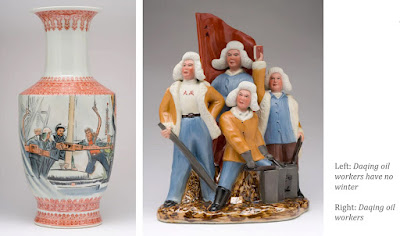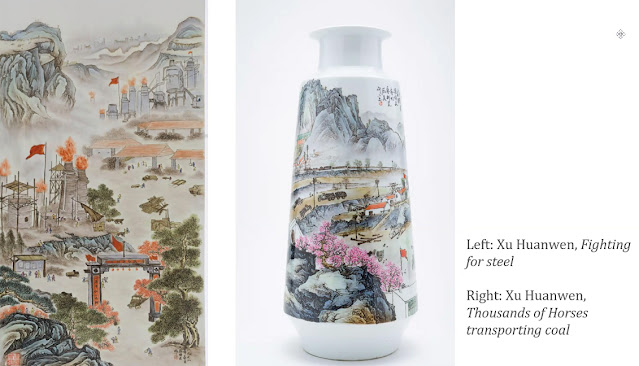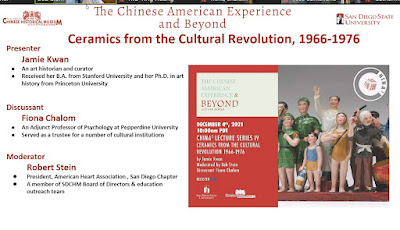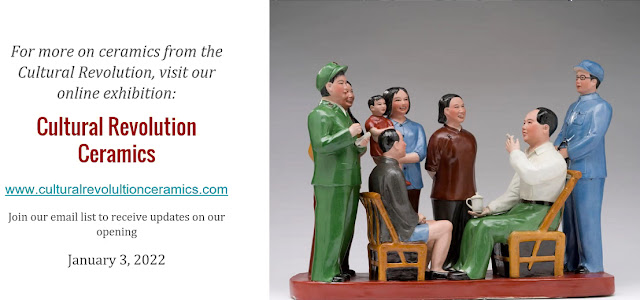by Patricia Frischer
These really amusing ceramic sculptures are not meant to be
a joke. They are Mao Zedong’s way to try to control his cultural revolution from 1966 to 1976. These works are from an upcoming show opening Jan 3 as a collaboration of the Chinese Cultural
Center and San Diego
Chinese Historic Museum put together by Fiona Chalom, Ph.D. Adjunct
Professor of Psychology at Pepperdine University and private practitioner, Li-Rong
Lilly Cheng, San Diego State University and director of the Chinese
Cultural Center at SDSU, and the chair of the board of directors at the San
Diego Chinese Historical Museum and Jamie Kwan, Ph.D. Princeton
University, curator and art advisor based in Los Angeles.
All of the art produced during this period was made to enforce the Little Red Book doctrines. Traditional art was banned and only realistic art that served the state was allowed.
 |
| The shaming of intellectuals was a common practice. The real view on the right was bloody and violent. The sanitized ceramic version could be purchased to show your loyalty. |
 |
| The worker, the peasant and the soldier were elevated and idealized. |
 |
| When traditional shapes were used it was only to illustrate workers, in this case, in the oil industry. |
 |
| These are relatively small works and the figure were made in individual molds that could be used in a variety of groups. |
 |
| The Mao figure in this tableau is smaller so the artisan put him on a pedestal as he always had to be the highest one in any group. |
 |
| Making sure that Blacks and other Asians were included as part of the proletariat. |
 |
| The Arts that served the cause were included like this figure from the ballet The White Haired Girl. Her landlord separated her from her lover and her hair turned white during her exile. |
 |
| Traditional ink painting and landscapes are suspect but allowed when they glorified the work of the steel and coal workers. |
 |
| However, not everything at the top was as you might expect. These very fine, very white porcelain dishes with a totally artistic cherry blossom motif were commissioned for use at the Zedong residence. |
You can sign up for more information about the exhibition and check out other talks in this series at
Chinese
Cultural Center.
I asked and was told that there will be further lectures on contemporary and modern Chinese ceramic art.
For a site specializing in the historical archive of
the Cold War go to The Wende Museum,















No comments:
Post a Comment